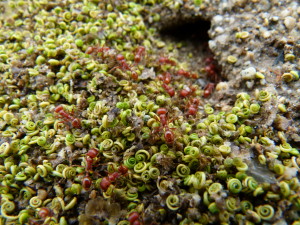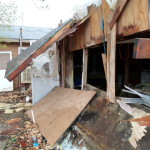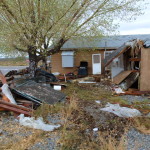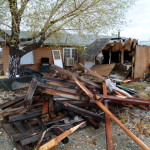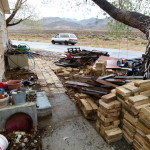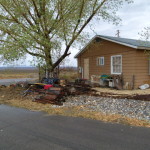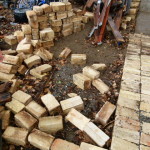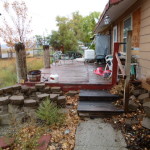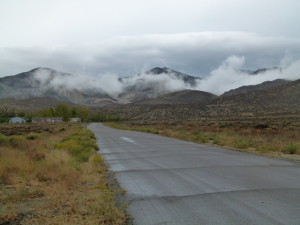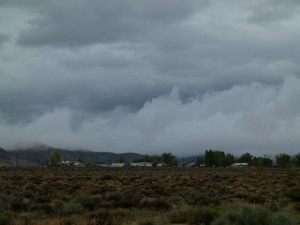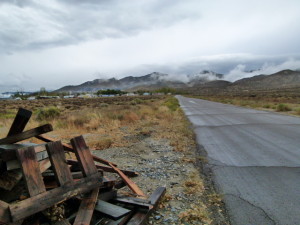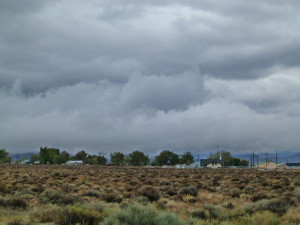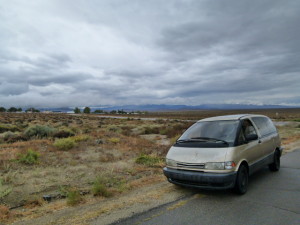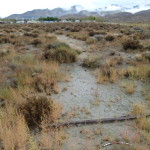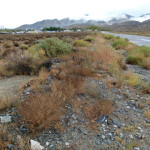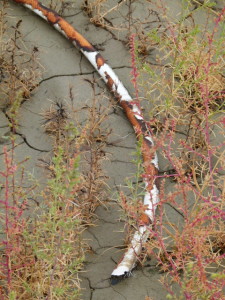Something that always impresses me is that a superficial glance at the sparse, prickly landscape of high altitude desert will convince you that it is devoid of life, or at the very least, that there is little of it compared to the seething biomass density of a jungle or deciduous forest. As for plant biomass, certainly there is far less photosynthesis going on in a desert.
But insects are just as prevalent it seems, if only layered on the single story of flora amongst the sagebrush and mesquite bush. There are as many ants, to be sure. There seem to be as many root dwellers, spiders, and centipedes. The landscape of the desert hides it’s pervasive populations of myriad species under the blanket of soil surface, and night.
We’ve been demolishing perimeter walls and shoddy additions on the house adjacent to the 4 acres we plan to develop for the greenhouses. In the process, I personally killed three massive black widows, countless other males of the species, hobo and wolf spiders, cockroaches, centipedes, etc. The spider population in the shoddy construction and cluttered squalor is astounding. It’s dangerous. We’ve discussed acquiring tyvek suits for demolition on the interior spaces and I for one am adamant that we follow through on this. We’re destroying their squat and they aren’t at all happy about it.
We had our meeting to discuss the scope of the project. We shared our concerns for the future, laid out a plethora of reasons for why the project makes sense, then proceeded to what we need to accomplish the project. The first task at hand is to salvage and inventory all resources present in the house adjacent to the four acres. We’ve got hundreds of 4×6 posts five feet in length. We have approximately 7000 kiln bricks used by the previous owner as patio block. There are various length and width stretches of wire mesh, and hose. We’ll use all this in first building gabion perimeter walls for windbreak and to define space inside which will be infrastructure elements like the quanzet hut metal shed, tool shed, Workshop structure and finally, greenhouses.
As always there are the annoying realities of small town politics at work, causing endless intrusions into conversation, and shaping the nature of how the project unfolds. Ideally you just move ahead and ignore all the squawking and revise your workflow to accommodate the random visits by interested neighbors.
I’m finding myself steering clear of all distractions and saying very little when the occasion arises. One reason for this is that we need to forge ahead and give no opportunity for anyone to feel the need to provide their opinion or give input on any aspect of our creation. It is like a painting that needs to be kept hidden until complete. A work of art goes through a sequence of stages that can be viewed as ripe for negative critique, or seen as a static totality when observed at any stage of process, that belies the unfolding of the organic flow of creation. So it’s wise to keep it hid until it’s complete. It’s only fair to the grand vision, is respectful of yourself, and a favor to the viewer not to confuse the final product with the flotsam and jetsam of the torrent of the creative process.
Of the five days I’ve been here, it has rained three. This is the season of increasingly volatile weather, yet it still surprises me and might surprise you, reader, to know that on average this region has an annual rainfall of 6 inches. Add to that monumental figure, the one inch of annual snowfall and you can begin to see why water is a commodity worth more than gold where growing anything but cheatgrass or sagebrush is desired. And also, why it’s so magical to be here right now, since my favorite thing of favorite things is the smell of sagebrush on the breeze after a desert rainstorm.
The overcast weather and low clouds keep rolling in from the west and intermittent rain showers continue to saturate the ground. This is a good thing, since I’ve been wanting to see the flow of water on the 4 acre site. I’m watching to see how much water the soil can bear before it begins to flow on the surface and how much water it will take to cause flooding on the property. We will design 100 year flood mitigation into our landscaping plan to take advantage of all the precious inches that fall in less prolific years.
There is a gully that runs the length of the angle of the isosceles triangle that is the four acre plot shape. This gully delivers it’s hold to the backdoor of the house we’re salvaging resources from. In a flood, the house would certainly be inundated. We’ll be moving a lot of earth to re-direct the flow of the gully water into swales higher up slope. At the mouth of the gully, at the base of slope, we will move soil from roadside burms up-slope, to raise the level about 4 feet and lay down a protective sloped gabion barrier wall. This will direct water toward the greenhouse zone and there, two 10′ diameter, 8′ deep cisterns will collect 9,600 gallons of potential runoff. If ever there is overflow, the cisterns will allow it to exit via 6″ corrugated pipe into the roadside ditch.

